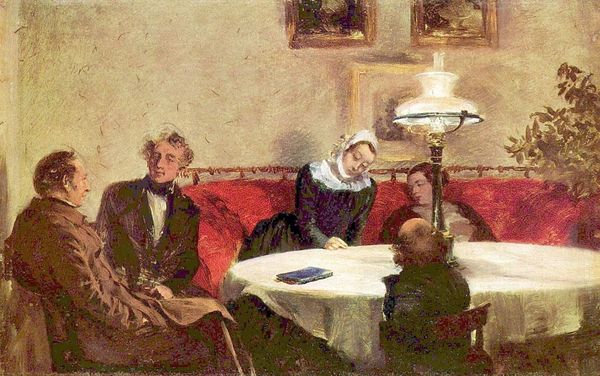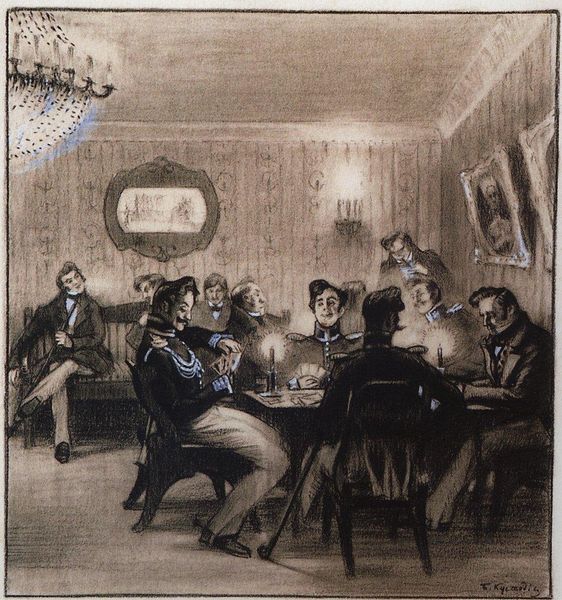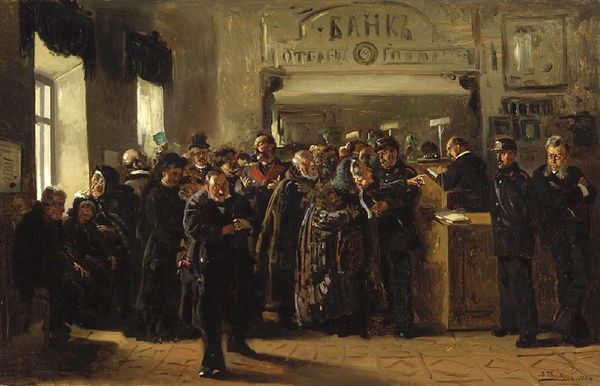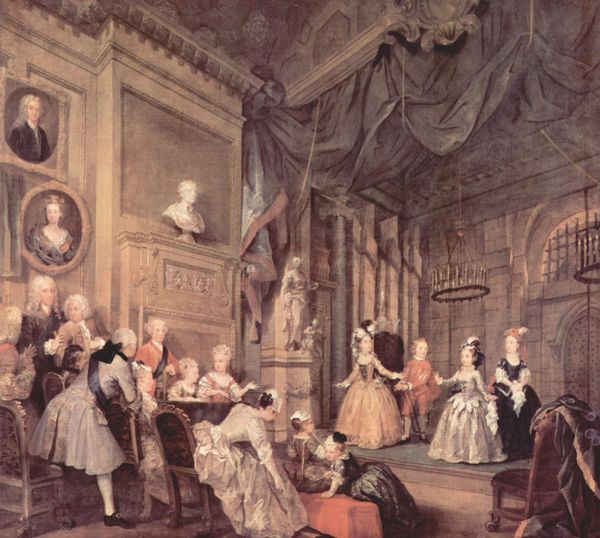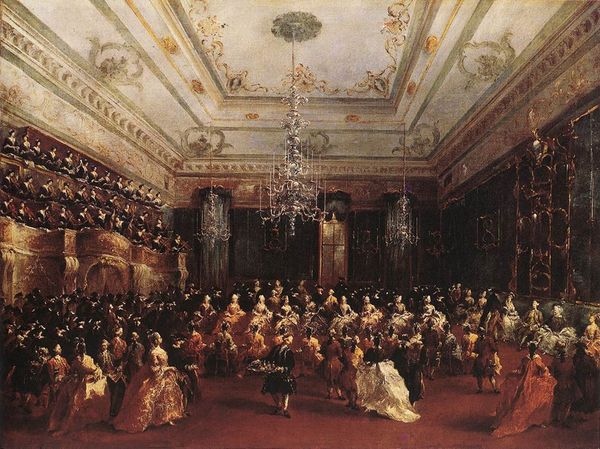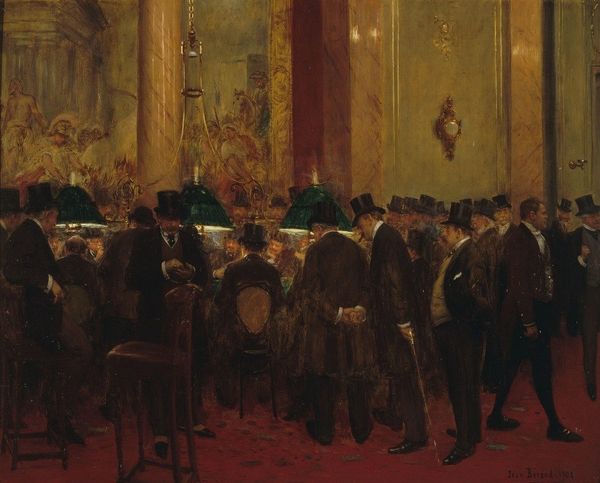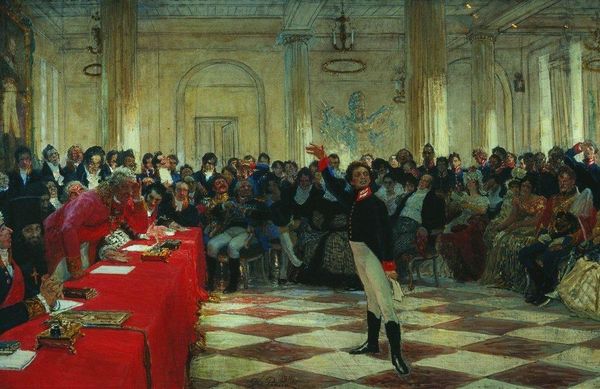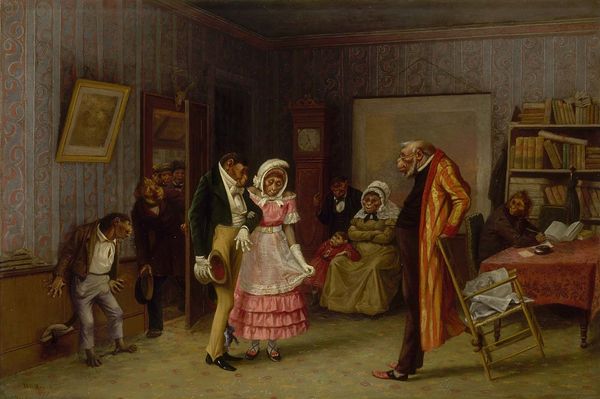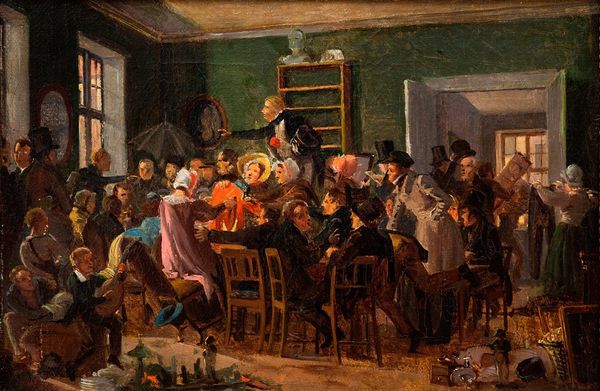
oil-paint
#
portrait
#
oil-paint
#
furniture
#
handmade artwork painting
#
oil painting
#
studio composition
#
group-portraits
#
painterly
#
russian-avant-garde
#
genre-painting
#
academic-art
#
realism
Copyright: Public domain
Curator: This is Boris Kustodiev’s “In the living room in Moscow in 1840's,” painted in 1912 using oil paints. Editor: The initial impression is one of vibrant yet restrained energy. The eye travels through the layers of figures and opulent details, all anchored by that striking green wall. Curator: Note how Kustodiev uses color and form to create a complex spatial composition. The figures are arranged almost theatrically, with attention paid to gesture and facial expression within that intense chromatic unity. Editor: Precisely. And when you look closely, there’s an almost exaggerated materiality in rendering clothing and furnishings. It's about status but also about a kind of pre-industrial fabrication – look at the sheen of the vase being carried in the corner. You can almost feel the textures. Curator: A sharp observation! Considering the Russian avant-garde movement prevalent at the time, one sees this artwork less as a mimetic depiction of an actual Moscow parlor, and more a structured staging where elements signify beyond their immediate representation. Observe how the columns frame these men in a way that both empowers them but limits them in this static scene. Editor: It really invites us to think about production—both the artist's hand and the societal context that birthed these displays of wealth. How were those clothes made? What labor allowed these gentlemen to leisurely play cards? The making, both literal and metaphorical, comes to the forefront. Curator: It is through careful organization of form and pictorial elements, the artist creates something bigger and timeless. I find its real genius to be its structural harmony and controlled composition. Editor: Perhaps. Yet, by examining the work's materiality and its reflection on 1840's Moscow, a story is created—one which is inherently social and rooted in tangible realities of production. Curator: Ultimately, both perspectives allow for deeper engagement with this fascinating painting, one which, I believe, would make the artist very happy. Editor: Agreed. There are so many narratives, told subtly with deft precision and an underlying understanding of the society it depicts, I am pleased with the conversations we were able to open about it.
Comments
No comments
Be the first to comment and join the conversation on the ultimate creative platform.

